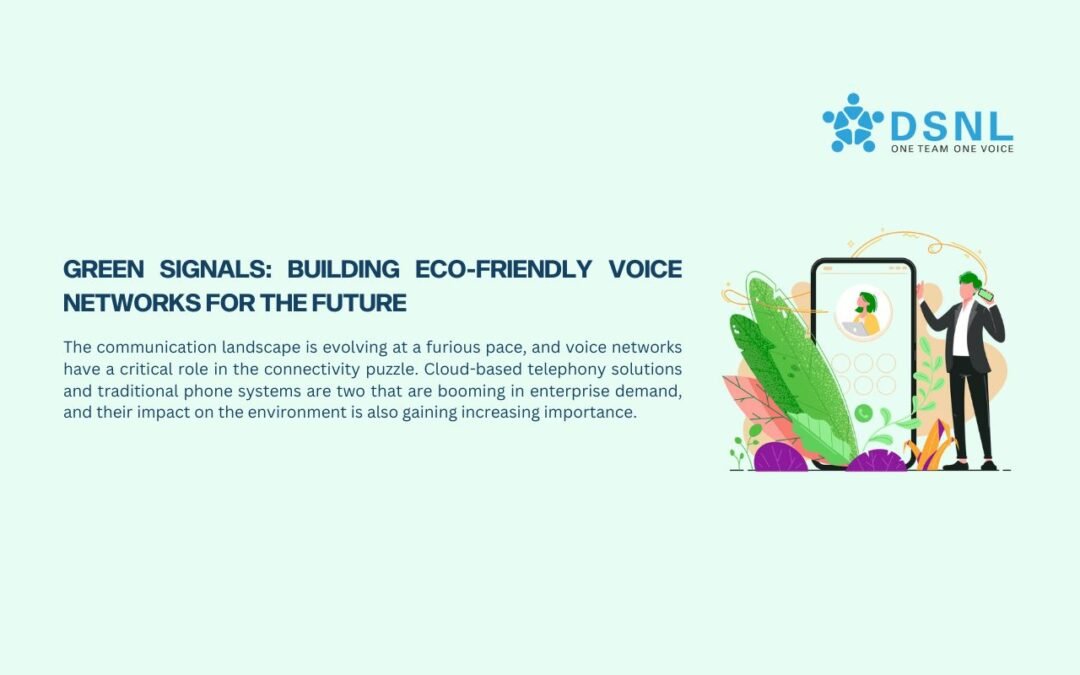The communication landscape is evolving at a furious pace, and voice networks have a critical role in the connectivity puzzle. Cloud-based telephony solutions and traditional phone systems are two that are booming in enterprise demand, and their impact on the environment is also gaining increasing importance. With green telephony and energy-efficient data centers, it is possible to design phone networks that support enterprise growth while also being kind to the planet.
The Energy Challenge with Voice Networks
In the pre-cloud era, the voice infrastructure consisted of PBX systems and on-premise IT resources. This entailed dedicated equipment, which always ran and drained considerable power. In the new world, this energy is drawn by data centers, which process millions of calls, 24×7. Cloud telephony is undoubtedly scalable and robust, but all those bits flying around are emitting carbon.
Cloud and Green Data Centers
Cloud computing is not just confined to one network, but can be spread across multiple data centers around the globe. Enterprises must identify those centers that are run on renewable energy or use clean power from local utilities. Other innovative solutions include AI-driven server load management and cooling systems to manage their carbon emissions.
Cloud Data centers have the added benefit of being able to dynamically scale resources, up or down, based on user demand. This elasticity not only saves money on the network bills, but also keeps energy consumption down, as no resources are idle.
Advanced call-routing algorithms and AI-based predictive analysis of call volumes can further improve the sustainability metrics of your voice network.
The Role of 5G and Future Networks
The next-gen 5G is finally here, and it is setting new standards in bandwidth, but the use of more energy to drive it could be a concern. A 5G network is optimized to deliver higher data at relatively lower power usage. The transition to a fully 5G-based voice network can bring significant carbon savings for enterprises. In addition to lower power requirements for the same services, 5G also enables lower latency for voice calls.
Future versions of 5G will also have in-built features to track the carbon emissions and route the calls through green paths. These features will enable enterprises to track and manage their call network footprint more effectively, and go a long way toward helping them fulfill their environmental obligations.
Measuring and Reporting the Carbon Footprint
Enterprises need tools to measure the carbon footprint of their voice networks at all times. The monitoring features of these applications cover everything from the amount of power consumed across data centers to the emissions created per call made.
Analytics will also help set up internal benchmarks and keep transparent records of their environmental impact, which could be published to the world if the enterprise so chooses. All these measures will be key to helping businesses stay ahead of both carbon emission laws and customer expectations.
Conclusion
The tension between new business growth and environmental protection is a complex challenge that must be resolved in a comprehensive manner. The good news is that green telephony doesn’t have to be a drag on the bottom line and profit growth. On the contrary, it comes with an array of benefits, including lower bills, higher performance, and stronger brand equity.
Let the voice of the future be connected as well as sustainable. Act now – partner with DSNL to make your voice networks and systems smarter, greener, and more sustainable.

